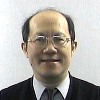China has long recognized the importance of investing in innovation but remains hindered by state backing, writes Willy Lam.
Recent troubles hitting Suntech, the star manufacturer of solar panels, which spearheaded China’s clean energy drive, have highlighted the opportunities and challenges of state-driven innovation with Chinese characteristics.
While Suntech is a private firm that is listed in the New York Stock Exchange, its growth was predicated upon voluminous credit from state banks and different kinds of support from local governments. Cut-throat global competition and excessive capacity, coupled with the drastic downturn in demand in the American and EU markets, however, has led to a collapse in its stock price and a likely default on its gigantic loans.
Overall, Chinese innovation – which is one of the key concerns of the administration of President Xi Jinping and Premier Li Keqiang – remains in reasonably good shape.
Owing to ballooning labor, land and energy costs, even Chinese manufacturers are moving to less expensive production bases in countries such as Sri Lanka, Bangladesh – and even Africa. The only way for China’s “world factory” to continue to thrive is to move up the value chain.
There are quite a number of success stories in Chinese high-tech. Huawei, the globally known IT company, last year displaced Ericsson as the world’s largest telecommunications equipment maker. Its new generation of smart phones is expected to give a lot of competition to Samsung and Apple.
China is also a world leader in cutting-edge fields ranging from high-speed trains and supercomputers to biotech and nano technology.
The Xi-Li administration has committed itself to raising spending on research and development to 2.5 percent of GDP, which is the level achieved in mature industrialized countries.
Moreover, China boasts the world’s largest talent pool of well-trained personnel. More than 50 million scientists and engineers work in both private and state-owned enterprises (SOEs) involved in high-tech pursuits.
President Xi, who is also commander-in-chief, is set to promote more synergy between the R&D facilities of state-run military and aerospace industries on the one hand, and civilian and private high-tech firms on the other.
For example, experts responsible for China’s ambitious space exploration program are also involved in manufacturing commercial jets that are expected to compete with Boeing and Airbus one to two decades later.
The size of China’s domestic market is such that ventures in areas ranging from high-speed train to green technology can quickly achieve economy of scale.
State-driven innovation, however, has obvious limitations. Not unlike the Soviet Union – which excelled in space exploration as well as the production of missiles and jetfighters – Chinese know-how is at its best where breakthroughs in technology require the mobilization of huge financial and human resources.
The large-scale involvement of the state, however, has spawned problems including favoritism for privileged classes – and even corruption. It is not surprising that many princelings – a reference to the children of party elders – have been playing a big role in high-tech ventures largely due to their sterling political connections.
For example, Dr Jiang Mianheng, the eldest son of ex-president Jiang Zemin, has been active in aerospace and IT-related industries. Lately, Jiang, who is also a Vice-President of the Chinese Academy of Sciences, has kept a low profile perhaps to minimize unfavorable publicity.
Moreover, big chunks of the Chinese economy – including those with the best potentials for moving up the value chain – are monopolized by about 120 centrally controlled SOEs. These government-backed national champions, however, have a poor record in innovation.
It is true that the number of Chinese corporations that have made it into the Fortune 500 list have increased steadily. Most of them are SOE conglomerates such as the three oil majors and the four state-held commercial banks. However, their multi-billion dollar sales figures are based mainly on their monopolistic status in a market that has 1.3 billion potential customers.
Yet not a single Chinese company has been honored in the 2012 Thomson Reuters Top 100 Global Innovators list. By contrast, 25 per cent of these “top global innovators” hail from Japan, and 7 percent from South Korea.
The Chinese leadership, however, can draw consolation from the fact that among the “returnees” – a reference to the 300,000 Western-educated Chinese who have returned to work in China – a good proportion consists of well-trained engineers and entrepreneurs who are conversant with the values and business norms of the global high-tech industries.
Moreover, venture capital, which is essential to the development of private high-tech firms, has been growing fast. In 2011, non-state venture capital committed to technologically advanced Chinese companies reached $13 billion, which was almost half of that invested in American firms.
Following efforts made by ex-premier Wen Jiabao, Premier Li has vowed to press state banks to be more proactive in lending to private technological start-ups.
The contretemps hitting Suntech, however, has highlighted the fact that more than three decades of the reform and open-door policy notwithstanding, China lacks a level playing field and a spirit of free competition that are prerequisites for world-class innovation. ■

















